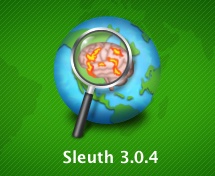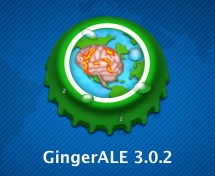What is BrainMap?
BrainMap is a database of published task and structural neuroimaging experiments with coordinate-based results (x,y,z) in Talairach or MNI space. The goal of BrainMap is to develop software and tools to share neuroimaging results and enable meta-analysis of studies of human brain function and structure in healthy and diseased subjects.
The BrainMap Project is developed at the Research Imaging Institute of the University of Texas Health Science Center San Antonio. BrainMap was conceived in 1988 and originally developed as a web-based interface. After more than 20 years of development, BrainMap has evolved into a much broader project whose software and data have been utilized in numerous publications. BrainMap provides not only data for meta-analyses and data mining, but also distributes software and concepts for quantitative integration of neuroimaging data.
Collaborations
The BrainMap development team welcomes collaborations. We will provide guidance and assistance in the execution of meta-analyses upon request. We encourage collaborations that develop new tools for meta-analysis or use BrainMap data to develop or validate other neuroinformatics tools and strategies.
BrainMap ICA Results
Networks resulting from an ICA decomposition of modeled activation images archived in BrainMap strongly correspond to resting state networks, as shown by Smith et al., 2009. Given the vast amount of metadata archived in BrainMap, the functional significance of these intrinsic connectivity networks was quantitatively assessed by Laird et al. (2011). For more details, and the associated network images and metadata at a model order of 20, please click here.
Citing BrainMap
If you have used the BrainMap database in your research, please cite one or more of the following papers in your references.
- For citations concerning Sleuth, Scribe, and BrainMap meta-data:
Fox PT, Lancaster JL. Mapping context and content: The BrainMap model. Nature Rev Neurosci 3, 319-321, 2002. [pdf] [PubMed]
andFox PT, Laird AR, Fox SP, Fox PM, Uecker AM, Crank M, Koenig SF, Lancaster JL. BrainMap taxonomy of experimental design: Description and evaluation. Hum Brain Mapp 25, 185-198, 2005. [pdf] [PubMed]
andVanasse T, Fox PM, Barron D, Robertson M, Eickhoff SB, Lancaster JL, Fox PT. BrainMap VBM: An Environment for Structural Meta-analysis. Human Brain Mapping, 39, 2208-3325, 2018. [pdf]
andLaird AR, Lancaster JL, Fox PT. (2005). BrainMap: The social evolution of a functional neuroimaging database. Neuroinformatics 3, 65-78. [pdf] [PubMed]
- For citations concerning GingerALE:
Eickhoff SB, Laird AR, Grefkes C, Wang LE, Zilles K, Fox PT. Coordinate-based activation likelihood estimation meta-analysis of neuroimaging data: A random-effects approach based on empirical estimates of spatial uncertainty. Hum Brain Mapp 30, 2907-2926, 2009. [pdf] [PubMed]
andTurkeltaub PE, Eickhoff SB, Laird AR, Fox M, Wiener M, Fox P. Minimizing within-experiment and within-group effects in activation likelihood estimation meta-analyses. Hum Brain Mapp 33, 1-13, 2012. [pdf] [PubMed]
andEickhoff SB, Bzdok D, Laird AR, Kurth F, Fox PT. Activation likelihood estimation revisited. Neuroimage 59, 2349-2361, 2012. [pdf] [PubMed]
For citations concerning the subtraction algorithm:Eickhoff SB, Bzdok D, Laird AR, Roski C, Caspers S, Zilles K, Fox PT. Co-activation patterns distinguish cortical modules, their connectivity and functional differentiation. Neuroimage 57, 938-949, 2011. [pdf] [PubMed]
- For citations concerning Meta-Analytic Connectivity Modeling (MACM):
Robinson JL, Laird AR, Glahn DC, Lovallo WR, Fox PT. Meta-analytic connectivity modeling: Delineating the functional connectivity of the human amygdala. Human Brain Mapping 31(2), 173-184, 2010. [pdf] [PubMed]
andLaird AR, Eickhoff SB, Li K, Robin DA, Glahn DC, Fox PT. Investigating the Functional Heterogeneity of the Default Mode Network Using Coordinate-Based Meta-Analytic Modeling. The Journal of Neuroscience 18, 14496-14505, 2009. [pdf] [PubMed]
andRobinson JL, Laird AR, Glahn DC, Blangero J, Sanghera MK, Pessoa L, Fox PM, Uecker AM, Friehs G, Young KA, Griffin JL, Lovallo WR, Fox PT. The functional connectivity of the human caudate: An application of meta-analytic connectivity modeling with behavioral filtering. Neuroimage 60(1), 117-129, 2012 [pdf] [PubMed]
andKotkowski E, Price LR, Fox PM, Vanasse TJ, Fox PT. The hippocampal network model: A transdiagnostic metaconnectomic approach. NeuroImage: Clinical 18(2018), 115-129, 2018. [pdf] [PubMed]
- For citations concerning the icbm2tal transform:
Lancaster JL, Tordesillas-Gutierrez D, Martinez M, Salinas F, Evans A, Zilles K, Mazziotta JC, Fox PT. Bias between MNI and Talairach coordinates analyzed using the ICBM-152 brain template. Hum Brain Mapp 28, 1194-1205, 2007. [pdf] [PubMed]
andLaird AR, Robinson JL, McMillan KM, Tordesillas-Gutierrez D, Moran ST, Gonzales SM, Ray KL, Franklin C, Glahn DC, Fox PT, Lancaster JL. Comparison of the disparity between Talairach and MNI coordinates in functional neuroimaging data: Validation of the Lancaster transform. Neuroimage 51, 677-683, 2010. [pdf] [PubMed]
BrainMap® Copyright Policy
BrainMap is a registered trademark of the University of Texas. All software and curated data contained in, or used by, the BrainMap database are copyrighted by the University of Texas. BrainMap software and data are available for use, free of charge, for educational and scientific, non-commercial purposes. The BrainMap coding scheme and its taxonomy of experimental design are available for use without restriction. If BrainMap's data, software, or coding strategies are used in scientific publications, we request that one or more relevant publications of the development team be cited, as described above. The BrainMap development team welcomes collaborations. We will provide guidance and assistance in the execution of meta-analyses upon request. We encourage collaborations that develop new tools for meta-analysis or use BrainMap data to develop or validate other neuroinformatics tools and strategies. We do allow other databases and image-analysis environments to query BrainMap's data, but only with prior permission and as a joint development effort. BrainMap data may not be extracted for inclusion in other databases or redistributed in any manner without prior written permission.


